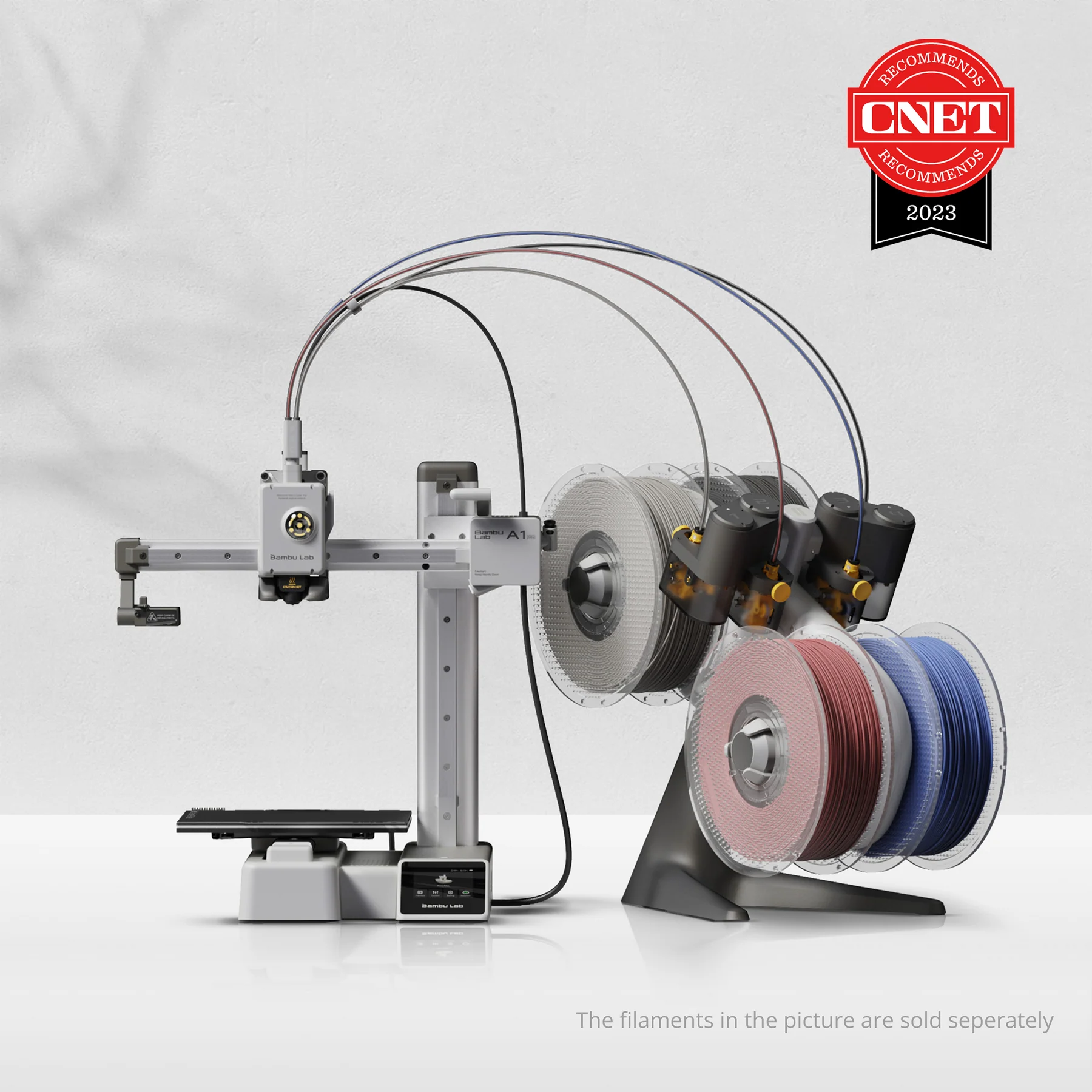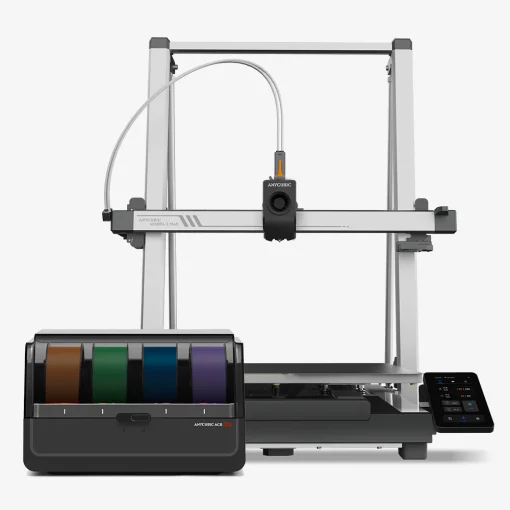Compare A1 Mini vs Kobra 3 Max Combo
Comparison between the best 3D printers
Choose the best 3D printer at the best price. The cheapest 3D printers are here.
Buy a 3D printer here with 3D Fila.
 |
 |
|
| Model | A1 Mini |
Kobra 3 Max Combo |
| Printing Material | Filament | Filament |
| Buy Filament for Bambu Lab A1 Mini | Buy Filament forAnycubic Kobra 3 Max Combo | |
| Estimated price | $549,00 | $699,00 |
| Manufacturer | Bambu Lab | Anycubic |
| Release Year | 2023 | 2025 |
| Print Volume [mm] | 180x180x180 | 420x420x500 |
| Printer Size [mm] | 315x347x365 | 640x753x706 |
| Weight [kg] | 5,5 | 23,6 |
| Power Loss Recovery | YES | YES |
| Enclosed printer | NO | NO |
| Bed Leveling | Automatic | Automatic |
| Filament End Sensor | YES | YES |
| Bed type | Heated | Heated |
| Power supply system | Direct Drive | Bowden |
| Standard nozzle | 0,4 | 0,4 |
| Maximum Nozzle Temperature [°C] | 300 | 300 |
| Maximum Bed Temperature [°C] | 80 | 90 |
| Maximum printing speed [mm/s] | 500 | 600 |
| Filament holder | YES | YES |
| Camera for supervision | YES | YES |
| Recommended filaments | PLA, PETG, TPU, PVA | PLA, PETG, TPU |
| Recommended slicers | Bambu Studio, Super Slicer, Cura, Prusa Slicer, Orca | Anycubic Slicer, Cura, Orca Slicer |
| Maximum Resolution [mm] | 0,1 | 0,01 |
| Processor | 32-bit Silenciosa | |
| Display | Touchscreen 2,4'' | Touchscreen 4,3'' |
| Power Supply | 150 W | 800 W |
| Connectivity | Wifi, Bambu bus, Cartão SD | USB, Wifi |
| Operating systems | Windows, Linux, Macbook | Windows, Mac, Linux |
| Date of registration in the system | 2024-04-10 | 2025-03-06 |
| Release date | 2023 | 2025 |
| Extra features | The Bambu Lab A1 Mini stands out not only for its impressive speed and automatic calibration, but also for its multi-color printing capability thanks to AMS Lite. This innovative system makes multi-color printing easy, making it accessible to everyone. AMS Lite, specific to the A1 Mini, supports up to four different materials simultaneously, providing creative freedom without complications. With comprehensive sensors for energy monitoring and recovery, a camera for timelapses and Wi-Fi control, the A1 Mini and AMS Lite together offer an intuitive and advanced 3D printing experience, ideal for materials such as PLA, PETG and TPU, and designed for simplicity and fast maintenance with quick-change nozzles. | The Anycubic Kobra 3 Max Combo combines high-speed and multicolor printing with up to 8 colors. It features automatic leveling, quick filament switching, clog and entanglement detection, and AI to prevent print failures. Its 800W hotbed heats up quickly, while 10,000mm/s² acceleration ensures efficiency. App and Wi-Fi control, print recovery, and video monitoring enhance the user experience. |
| Support for multiple colors and materials (AMS and CFS) | YES | YES |
Notes * |
||
| Cost-benefit | 7 / 10 | 7 / 10 |
| Hardware | 4.8 / 10 | 6 / 10 |
| Tela | . | . |
| Print volume | 3 / 10 | 4 / 10 |
| Performance | 4 / 10 | 5 / 10 |
Conclusion |
| In conclusion, both the Bambu Lab A1 Mini and the Anycubic Kobra 3 Max Combo present compelling options for those seeking a capable 3D printer, albeit with different strengths and considerations. The A1 Mini, released in 2023, is more compact and lightweight, making it a suitable choice for users with limited space. Its impressive speed, automatic calibration, and unique AMS Lite system for multi-color printing position it as an excellent choice for hobbyists looking for simplicity and versatile material options. The touch display and built-in camera enhance the user experience, particularly for beginners or those prioritizing ease of use. On the other hand, the Kobra 3 Max Combo, set to be released in 2025, boasts a significantly larger print volume and a robust set of features aimed at more advanced users. Its higher wattage power supply allows for faster heating and improved performance during extensive printing tasks. With support for up to eight colors and advanced features like AI-driven print failure prevention, this model is well-suited for users looking to tackle complex projects with a range of materials. While the A1 Mini offers a more affordable entry point into the world of 3D printing, the Kobra 3 Max Combo justifies its higher price with enhanced capabilities and larger build volume. Ultimately, the best choice will depend on the specific needs and budget of the user, whether they prioritize ease of use, print volume, or advanced features. |

